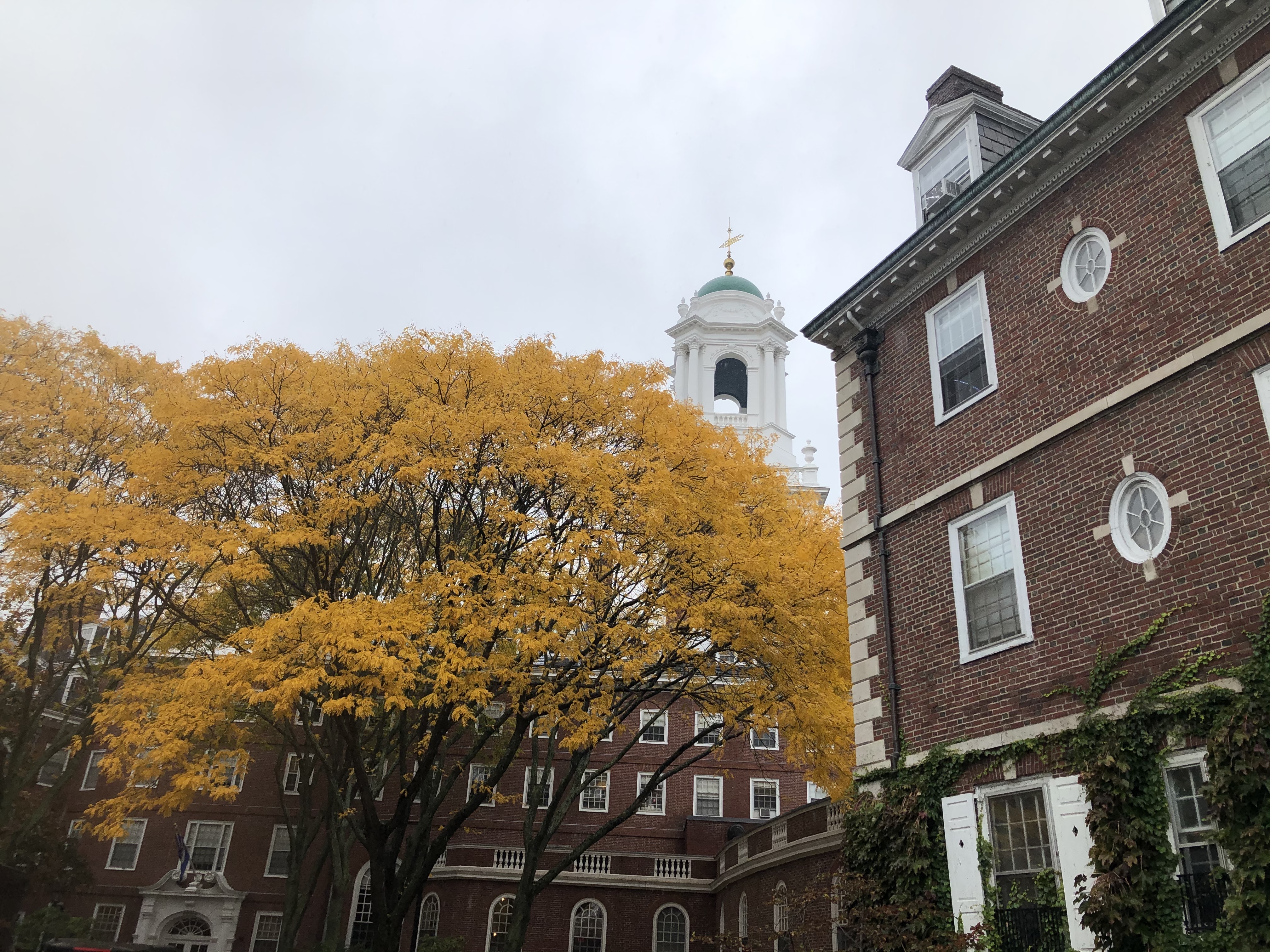In line with the many other realities of our COVID-adjusted world, the end of semester move-out from Harvard’s dorms looked quite different this year and presented its unique set of challenges. As planned for the fall semester, the administration required most undergraduate and graduate students living on campus to return home in the week before Thanksgiving and to stay home during reading period and finals.
Though some students are permitted to remain on campus through the end of the semester or even through winter break, all students who do not meet the select criteria to stay in residence were required to leave.
As outlined on the Dean of Students Office website, each student was expected to pack up and depart their rooms in a designated time window in order to achieve a “contactless checkout.” Since storage is not available on campus, the DSO asked students to take all their belongings with them or make personal storage arrangements with external vendors.
In addition, each student could have one helper to assist them in carrying items out of the building. However, the helper was required to wear a mask, limited to spending 15 minutes inside the building, and prohibited from helping the student pack.
What was this unusual move-out like for Harvard students?
Cory Beizer ‘24 found his move-out from Wigglesworth stressful: “I had to put a hold on school for a bit to get everything out and ready.” However, his teachers were “extremely understanding and accommodating” about missing class while travelling home, with one of his teachers unpromptedly granting students a week-long extension for their papers.
Some students found difficulty with the limited help they received during the move-out process. “I get why they didn’t have somebody helping me move,” said Kate Tunnell ‘24, who was in Leverett House, “but it definitely made the process take around 2-3 hours.”
“As far as I know we [move-out] completely on our own,” said Octavia Tyagi ‘24. “If there are any additional resources they have not been made clear.” She described her move-out from Greenough as “chaotic” and made more difficult because her family in California faced travel restrictions that prevented them from being able to help her in-person.
Evidently, Harvard’s COVID-sensitive guidelines resulted in an unusual move-out experience. But increasing COVID cases on campus and around the nation also influenced students’ overall experience in the days leading up to their departure from campus.
Lulu Patterson ‘24 decided not to say goodbye to her friends before leaving Cambridge, due to a number of COVID scares, many of which she believes were false positives. “I was worried one last hug would be detrimental in my attempts to stay healthy before seeing my family.”
In fact, Patterson moved up her departure date, “for a fear that I would be more likely to be exposed the longer I was on campus, and then might not see my parents or worse, that I would pass COVID to them.”
In the entire month of October, Harvard reported 35 total positive cases – none of which were among undergraduates. But in just this past week, there have been 32 new positive cases, bringing Harvard’s positivity rate to .21%, according to the University’s COVID-19 testing dashboard.
This percentage is out of all tests distributed to individuals authorized to participate in Harvard’s COVID-19 screening, including on-campus students, students in the University’s off-campus undergraduate pilot program, and, “any off-campus individuals who, based on contact tracing activities, are invited to be screened due to possible exposure to another Harvard community member known to have the virus,” the dashboard states.
At the beginning of the semester, “we had a full two months with usually so few covid cases per week that the count could fit on one hand,” said Patterson. But in the weeks leading up to Thanksgiving break, “the idyllic bubble of ~less than 0.1% positivity rate created by Harvard and Cambridge shattered.”
Isolation and quarantine data provide further evidence of Harvard’s rising case numbers. 80 on-campus individuals students are currently in isolation, sequestered either within Harvard facilities or within their home. 155 individuals are currently in quarantine, including those who are authorized to be on Harvard’s campus as well as close contacts, meaning those who are Harvard community members but who do not usually come to campus.
“A big fear among students was getting listed as a close contact and then quarantined for two weeks,” explained Patterson. In fact, some of her peers will be on campus in isolation through Thanksgiving. “While this is probably the best call for the health of any community, that does sound like a pretty sad thanksgiving: eating HUDS in your room, alone, maybe even with COVID.”
Students’ plans for next semester vary. Describing the freshmen class, Patterson expressed that “we really don’t know when we will all see each other again.” She said she can count three of her immediate friends who are taking the next term off. Beizer, in fact, will take a gap semester in the spring and hike the Appalachian trail. Tyagi plans to live in an apartment near campus with friends in the Spring. Tunnell is with her family in Santa Barbara for Thanksgiving and is unsure of her subsequent plans, stating that “everything is just so fluid right now!”
This year as a whole is riddled with impermanence and disruption. The departure of Harvard students from campus this semester was no exception. But even though the dorm hallways did not echo with the usual celebratory hugs and goodbyes as students packed up to return home, the mood of campus was not entirely diminished.
“We are really lucky to have been on campus this fall,” said Patterson. “If this is the beginning of the ‘best four years,’ I think we all hope this means things can only go up from here.”
Mary Julia Koch ‘23 (mkoch@college.harvard.edu) writes News for the Independent.

